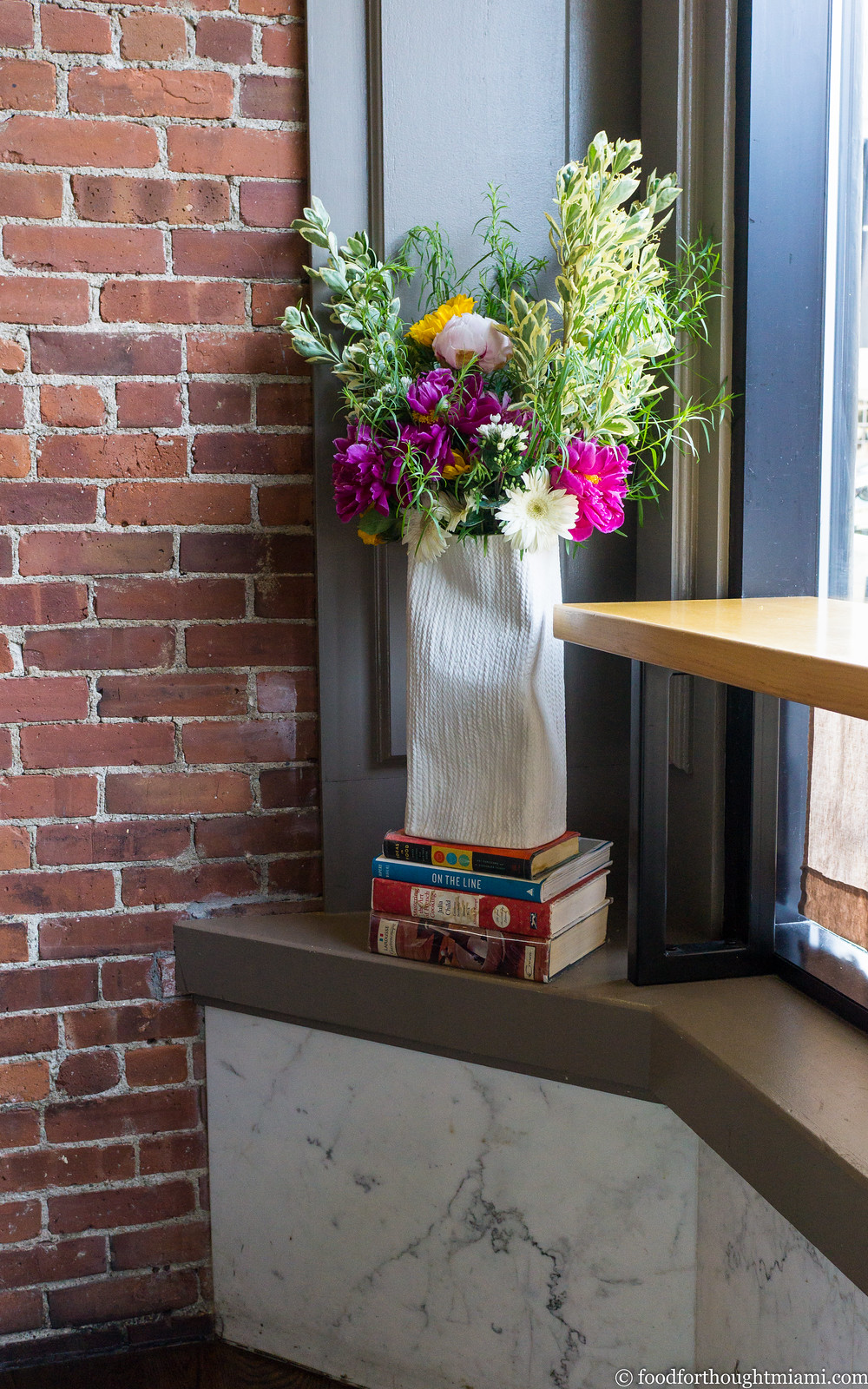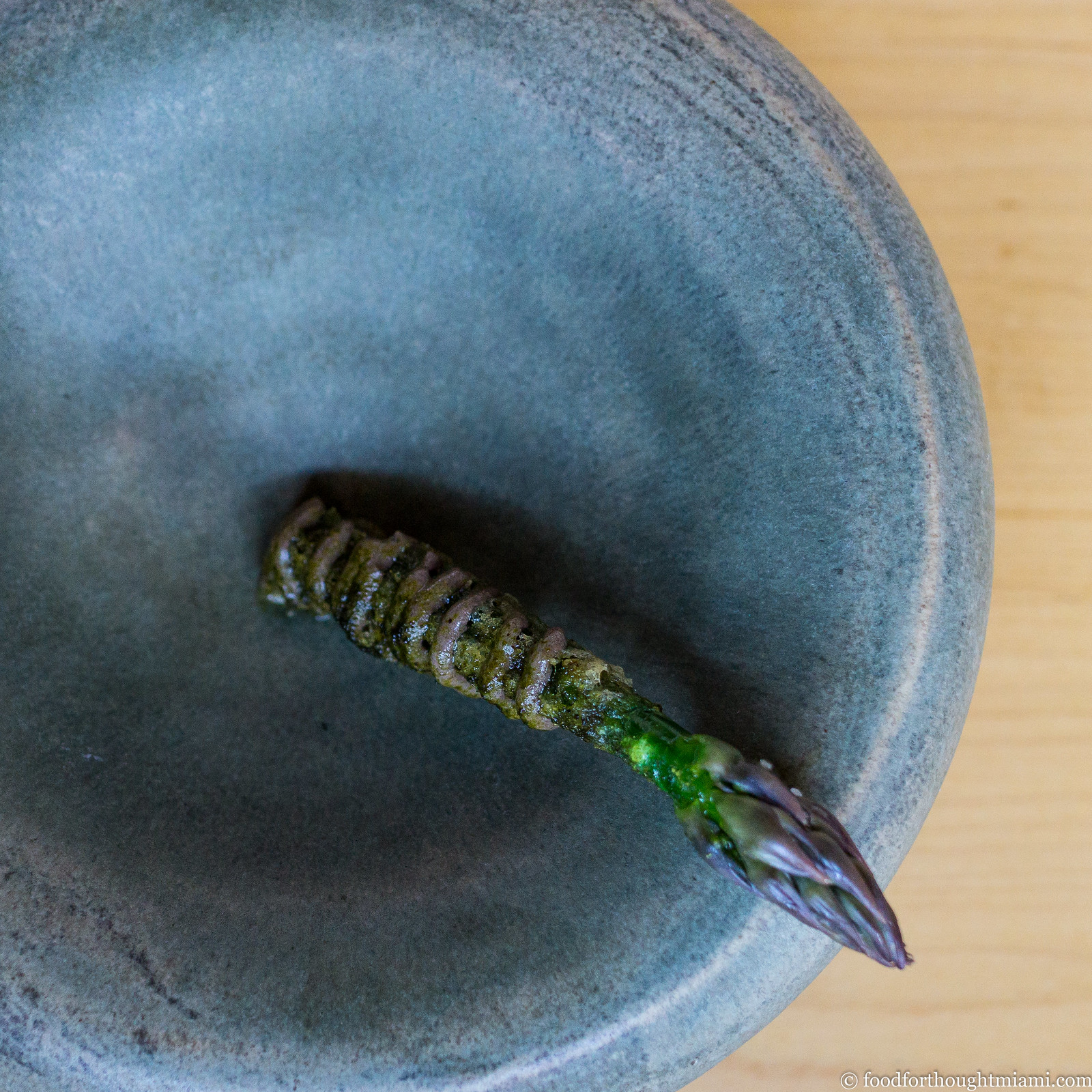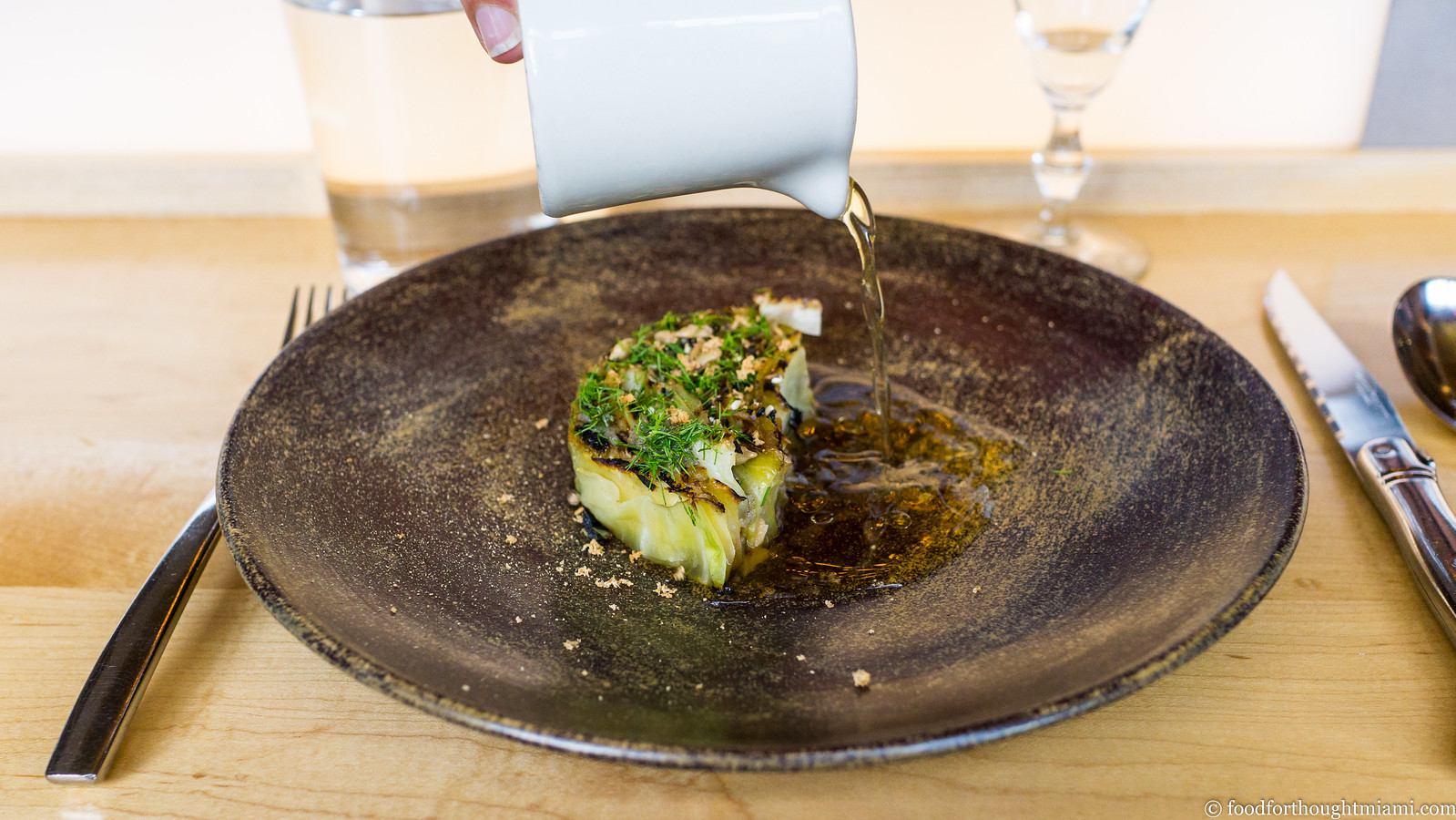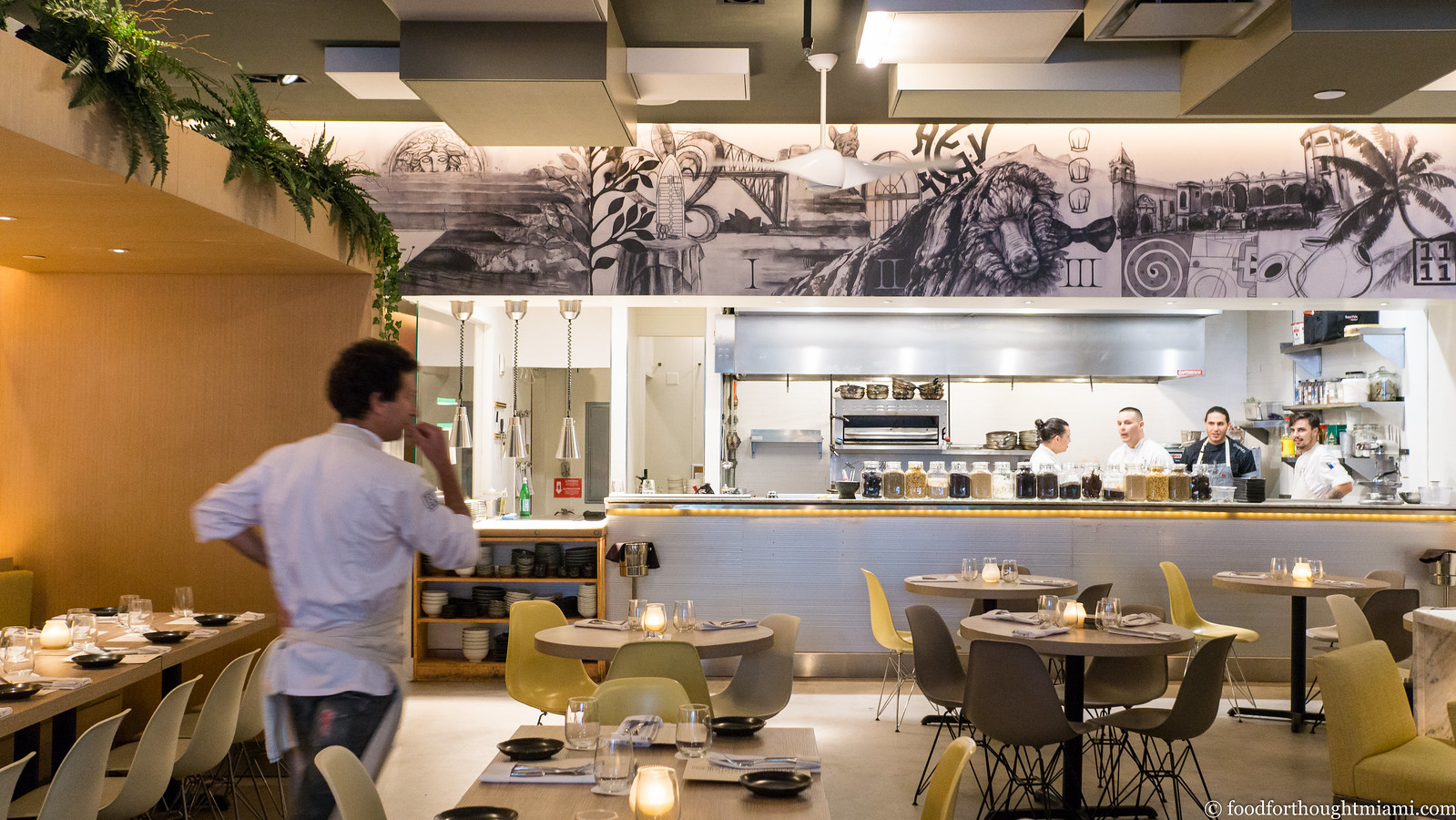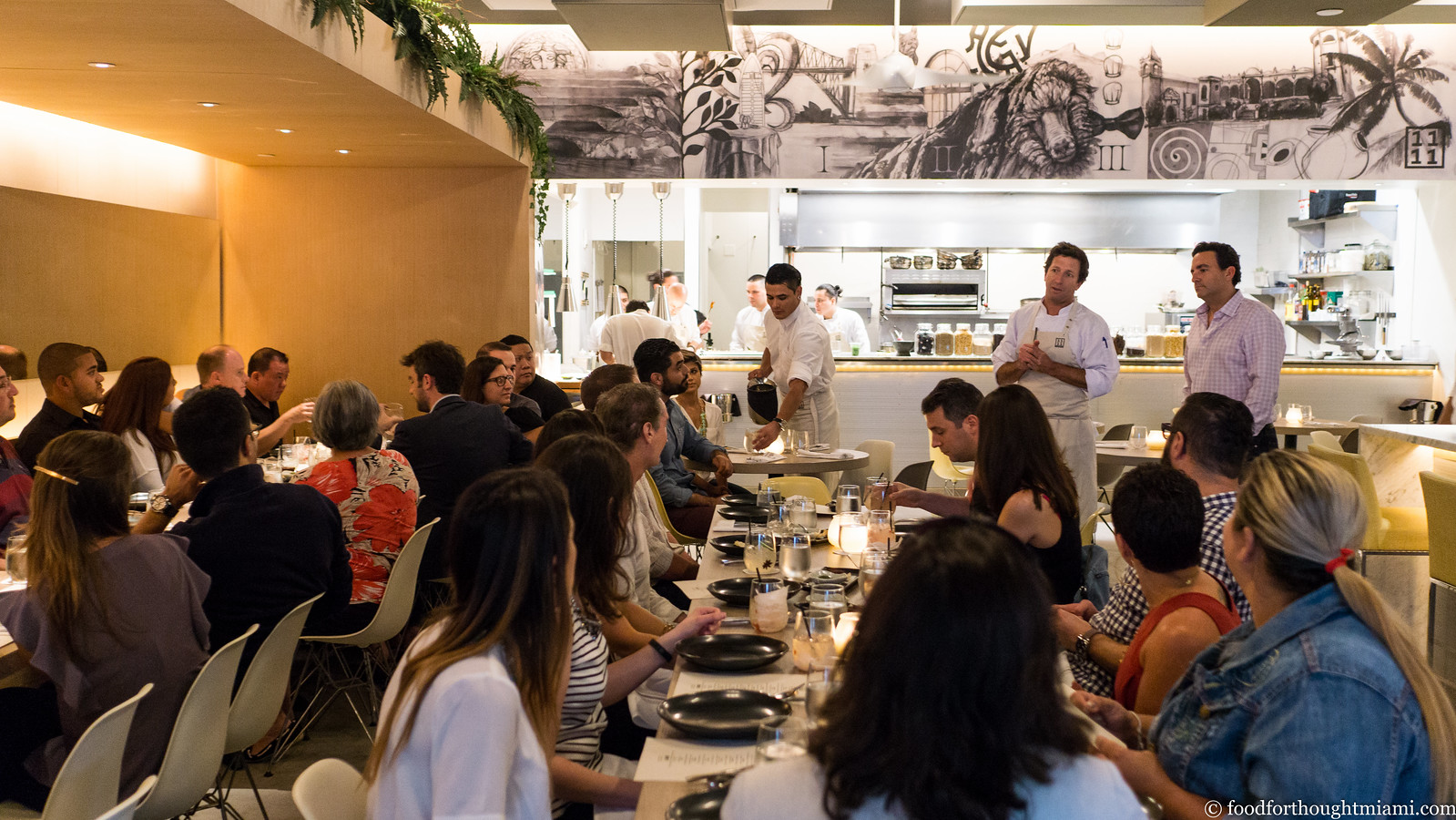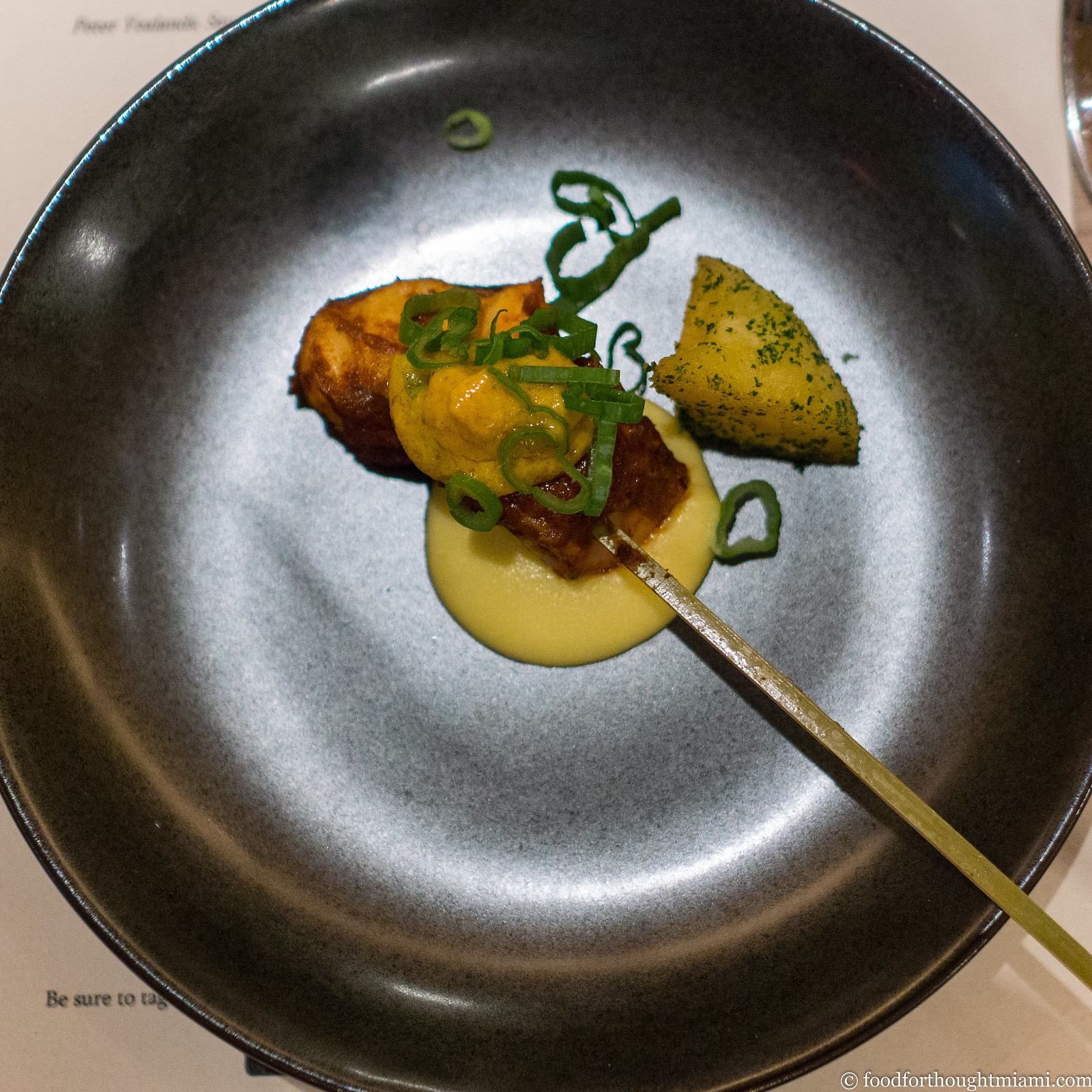Friday, June 24, 2016
Birch | Providence, Rhode Island
I lost count at fifty. So let's just say there are at least fifty sheets of kohlrabi, layered in soft, translucent ribbons, that made up this dish. They're marinated with cherry leaves, interspersed here and there with apple, Vietnamese coriander and lemon balm. The whole fragile assemblage is laid atop a base of tangy creme fraiche. It's beautiful, delicate, brightly flavored, unexpected – and also the best kohlrabi dish I've ever tasted.
Not that there's a robust competition for that honor. But I'm actually a big fan of the unloved and alien-looking vegetable. Apparently so is Ben Sukle, the chef at Birch in Providence, Rhode Island, which he opened with wife Heidi in 2013.
I keep lists of restaurants for dozens of cities I've never visited, as if I might get airlifted one day without warning and need to find a good meal. I didn't have a long list for Providence, but I did have at least this one name.[1] I'd heard of Birch by way of DocSconz, who'd gotten there early and then made his way back the following year.
So when I had reason to visit Providence this past Sunday,[2] I didn't look that hard for a same-day return flight, and instead lingered for dinner. It was time well spent.
As that kohlrabi dish suggests, Sukle's approach at Birch is vegetable-forward, with a strong focus on the local and seasonal, including a few real oddities here and there ("preserved hardy kiwiberry"?). Just from looking at his menu, you'd likely hazard a guess that Sukle's spent some time in the New Nordic church, and you'd be right: his resumé includes a one-month stage at Rene Redzepi's Noma, and it obviously made an impression. But there's a difference between inspiration and apery. This isn't all reindeer moss and gooseberries; Sukle's taken the spirit and ethos of the style and adapted it to his native New England ingredients in a way that feels natural and uncontrived.
That menu comprises four courses, with three choices for each. I unabashedly enjoy solo dining, but one downside is not getting to try as many things. Happily, there was a solution: though not listed, Birch will also do a chef's choice, 8-course tasting in smaller portions. Perfect.[3]
The dining room at Birch has a wonderfully simple layout: it's a square about 20 feet across, occupied by a u-shaped counter lined with comfortable stools on three sides. A couple servers present and remove plates and drinks from the middle. It's similar to places like Momofuku Ko or Blanca or Catbird Seat, or if you want to go a few years earlier, L'Atelier de Joel Robuchon, except that the kitchen remains hidden behind a closed door. To me, it's actually reminiscent of an old school horseshoe-shaped diner counter, and engenders a feeling of intimacy and camaraderie.
(You can see all my pictures in this Birch - Providence, Rhode Island flickr set).
The seasonal focus is on display from the start with a bite of asparagus, the stalk of which had been tempura fried and then wound with a paste of black garlic, truffle and nasturtium, the purple-shaded bud unadorned. The fried stalk was so delicate as to almost disappear in one bite; the raw tip retained a pleasing vegetal snap.
Following the kohlrabi, a dish of raw scallops paired with turnips in a broth infused with cherry blossoms, dusted with lemon zest, and topped with arugula flowers. The white-on-white composition looked like shards of alabaster in a shallow pool. The sweetness of the cold fresh scallop played against the firmer, earthy chew of the turnip, both bound by the salty, tangy, faintly floral broth.
(continued ...)
Thursday, June 23, 2016
best thing i ate last week: grilled cabbage at Birch (Providence)
This past Sunday I found myself in Providence, Rhode Island for 24 hours; a fortunate opportunity to pay a visit to chef Ben Sukle's restaurant, Birch. Here's an excerpt from a nearly-finished recap of an outstanding meal:
Instead of the usual slab of meat that invokes the end of the savory dishes on the tasting menu, Sukle went with a tranche of grilled cabbage. The edge was black with char, the interior was soft and silky without being cooked to sulfurous mush. Folded within was creamy rutabaga and caramelized sauerkraut. Speckled on top was an assortment of toasted seeds – sunflower, cumin, sesame. A broth of dried apples was poured tableside. This was a fantastic dish.
More to come soon.
Wednesday, June 22, 2016
Cobaya Muñoz at 1111 Peruvian Bistro
Diego Muñoz is a superstar chef. He spent the first part of his career working at some of the world's top restaurants: the Adriàs' El Bulli and Andoni Luis Aduriz's Mugaritz in Spain, Pascal Barbot's Astrance and Guy Martin's Grand Vefour in France, Massimo Bottura's Osteria Francescana in Italy, then off to Australia at Bilson's in Sydney. After literally cooking his way around the world, he returned home to Peru, where he ran the kitchen at Gaston Acurio's high-end tasting menu flagship, Astrid y Gaston, for four years. During Muñoz's tenure, Astrid y Gaston worked its way from No. 42 to No. 14 on the much-hyped (and much-criticized) S. Pellegrino World's 50 Best Restaurants list. When Ferran Adrià was in town last year for a "Gastronomy Congress" at Miami Dade College, Muñoz was one of the chefs on stage doing a demonstration, along with David Gil and Fran Agudo of brother Albert Adrià's restaurant, Tickets.
Then at the beginning of this year, Muñoz left Astrid y Gaston, with plans to embark on another year of world-wide cooking adventures. So when I stumbled across a small Peruvian restaurant that Muñoz had opened a few months ago in Miami, with no fanfare whatsoever – well, surprised would be an understatement.[1] We put the Cobaya wheels in motion to set up a dinner, which we were able to schedule while Muñoz would be in town this Friday.
Muñoz's restaurant, 1111 Peruvian Bistro, occupies the space that used to be home to BoxPark,[2] in the ground floor of the Axis Brickell condo building. It looks much the same, the most notable addition being a mural across the top of the open kitchen which appears to track Muñoz's career – I recognized the El Bulli bulldog, that shaggy sheep looks like the ones roaming the Basque countryside outside Mugaritz, the bowtie must belong to Tony Bilson, and there's Casa Moreyra, which houses Astrid y Gaston. At the end, beyond the palm tree, is 1111.
(You can see all my pictures in this Cobaya Muñoz at 1111 Peruvian Bistro flickr set).
Once we got everyone settled into a few communal tables, Chef Muñoz introduced himself to the group, and servers started bringing out the first round of an eight-plus course dinner.
Many food cultures have their versions of meat-on-a-stick. For Peruvians, it's anticuchos. Veal or beef heart may be the most traditional, but it could be just about anything: chicken livers, steak, fish, shrimp, or, as here, octopus. The meat had a nice spring to it without being chewy or bouncy, It had been rubbed with an anticuchera sauce bright with chiles, vinegar and spices, and was served over a creamy corn purée with a crispy potato alongside and a dab of salsa carretillera on top.
Peru's most famous dish, though, is surely ceviche. But Muñoz is not a traditionalist: he has made ceviches of sea urchin, clam, apple, melon, avocado, and I'm sure any number of other ingredients. Here, the base was the customary cubed whitefish, but it came swimming in a creamy, tangy leche de tigre, garnished with soft chunks of avocado and potent sliced fresh chiles, then given an Italian accent with briny capers and a drizzle of olive oil. It was a very good ceviche, and oddly reminiscent (in a good way) of a vitello tonnato.[3]
(continued ...)
Subscribe to:
Posts (Atom)


